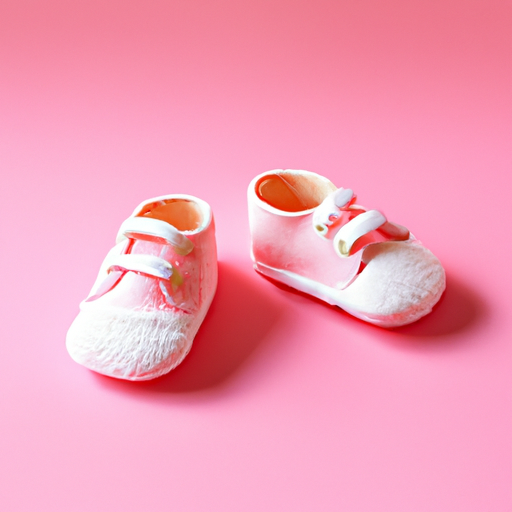In this article, we will explore the process of transitioning your baby from pureed solids to finger foods. You will learn about the signs that indicate your baby is ready for this transition, as well as the benefits of introducing finger foods at the right time. We will provide you with tips and suggestions on how to safely introduce new textures and flavors to your baby’s diet. By the end of this article, you will have a better understanding of how to make this transition a smooth and enjoyable experience for both you and your little one.

Understanding the Importance of Transitioning to Finger Foods
Transitioning to finger foods is a crucial milestone in a child’s development. It marks the shift from relying solely on breast milk or formula to exploring a wider variety of nutritious food options. This transition plays a significant role in helping children develop their motor skills, independence, and healthy eating habits. By introducing finger foods at the right time, parents can set the foundation for a lifetime of balanced nutrition and a positive relationship with food.
Benefits of Introducing Finger Foods at the Right Time
Introducing finger foods at the appropriate developmental stage is essential for several reasons. Firstly, it allows babies to practice and refine their motor skills. As they pick up and manipulate small pieces of food with their fingers, they develop their hand-eye coordination, dexterity, and fine motor skills. This early practice lays the groundwork for future activities that require precise hand movements, such as writing or using utensils.
Secondly, introducing finger foods promotes self-feeding and independence. As babies learn to pick up and feed themselves, they gain a sense of control and autonomy over their eating experiences. This newfound independence not only fosters their confidence but also encourages them to explore different textures, tastes, and food combinations. Self-feeding helps children develop a positive relationship with food by allowing them to respond to their hunger cues and explore their own preferences.
Signs of Readiness for Finger Foods
Before introducing finger foods, it is crucial to ensure that your baby is developmentally ready. There are several signs to look for to determine if your little one is ready to embark on their self-feeding journey.
One of the primary indicators of readiness is their motor skills development milestones. Babies need to have acquired certain motor skills, such as the ability to sit up with minimal support or maintain good head control. These skills are essential for safe self-feeding and prevent the risk of choking.
Additionally, your baby’s behavior can provide important cues regarding their readiness for self-feeding. If they show a keen interest in watching you eat, reaching out for your food, or attempting to grab utensils, these are signs that they are curious about exploring new textures and tastes. This curiosity and interest can be seen as motivation to introduce finger foods.
Introducing Soft Solids
When beginning the transition from breast milk or formula to finger foods, it is important to start with soft solids that are easy to chew and swallow. Soft solids allow babies to adjust to the new textures and mouthfeel while minimizing the risk of choking.
Choosing the right soft solids for your baby’s first experiences is crucial. Opt for foods that are easily mashed, such as ripe bananas, cooked sweet potatoes, or avocados. These foods can be easily manipulated by little fingers and offer valuable nutrients like vitamins, minerals, and healthy fats.
To prepare soft solids, make sure they are cooked until they are soft enough to be easily squished between your fingers. You can then cut them into appropriate-sized pieces for your child to grasp. Alternatively, you can mash the soft solids with a fork or blend them into a smooth puree for babies who are still developing their chewing skills.
When serving soft solids, let your baby explore the food at their own pace. Allow them to touch, taste, and experiment with different textures. Encourage them to pick up the food with their fingers and bring it to their mouth, supporting their independence in self-feeding.

Gradually Advancing to Textured Solids
As your baby becomes comfortable with soft solids, you can gradually introduce more textured foods to expand their palate and foster their oral motor skills. Texture is an important aspect to consider, as it helps babies develop their chewing and swallowing abilities.
When introducing textured solids, it is important to do so gradually to ensure your baby can handle the increased challenge. Begin by offering foods with a slightly firmer texture, such as well-cooked pasta or finely chopped fruits and vegetables. These foods provide more resistance, encouraging your baby to chew and developing their oral motor skills.
Furthermore, it is important to select appropriate textured solids based on your baby’s age and developmental stage. Avoid offering hard, small, or round foods that pose a higher risk of choking. Opt for softer, easily chewable options like cooked carrots, soft cheese, or shredded chicken. These foods provide the necessary textures while minimizing the risk of choking.
Understanding Choking Hazards
While introducing finger foods is an exciting adventure, it is essential to be aware of the potential choking hazards associated with certain types of food. Choking is a significant concern for young children, as their airways are smaller and their swallowing skills are still developing.
Identifying common choking hazards in finger foods is crucial for ensuring your baby’s safety. Foods such as whole grapes, popcorn, nuts, raw vegetables, and hot dogs should be avoided until your child is older and has developed more advanced chewing and swallowing skills. It is also important to avoid foods that are hard, round, or have a sticky consistency, as these can pose a choking risk.
Minimizing the risk of choking involves taking precautions during mealtime. Always supervise your baby when they are eating, and ensure they are sitting upright in a high chair or supported in a safe feeding position. Cut foods into appropriate sizes, avoiding large chunks or pieces that can become lodged in their throat. By being vigilant and selecting safe foods, you can minimize the risk of choking and create a safe environment for your little one to explore finger foods.
Building Confidence in Self-Feeding
One of the primary purposes of transitioning to finger foods is to encourage independence in self-feeding. Encouraging your baby to feed themselves not only develops their motor skills but also helps build their confidence and sense of autonomy.
To foster independence in self-feeding, provide your baby with opportunities to practice their skills. Offer a variety of finger foods that are appropriate for their age and developmental stage, allowing them to explore different tastes, textures, and colors. Avoid rushing or taking over the feeding process, allowing your baby to take the lead and enjoy the experience at their own pace.
Creating a supportive environment for self-feeding is equally important. Ensure that your baby has a comfortable and safe place to eat, such as a high chair or a feeding table. Offer age-appropriate utensils and dishes that are easy for them to hold and manipulate. Providing positive reinforcement, such as praising their efforts and celebrating their achievements, can also boost their confidence and enthusiasm for self-feeding.
Introducing a Variety of Finger Foods
As your baby becomes more comfortable with finger foods, it is important to introduce a wide variety of options to ensure they receive balanced nutrition. Exploring different food groups allows your child to experience a range of flavors, textures, and nutrients, contributing to their overall development and growth.
When introducing a variety of finger foods, aim for a balanced mix of fruits, vegetables, whole grains, and proteins. Offer colorful fruits like berries or sliced melons, steamed vegetables such as broccoli or carrots, and whole grains like cooked quinoa or oatmeal fingers. Include proteins like cooked chicken or tofu for added nutritional value.
Creative ideas for finger food combinations can help keep mealtime interesting and appealing for your little one. Try making fruit kabobs with a mix of fruits on a skewer, or create colorful veggie wraps using whole grain tortillas. Remember to cut the food into bite-sized pieces or strips to make it easier for your baby to handle and consume.
Overcoming Challenges in the Transition Period
As with any new stage of development, the transition from breast milk or formula to finger foods may come with its fair share of challenges. It is common for babies to show food refusal or display picky eating behaviors during this time. However, with patience and persistence, these challenges can be overcome.
If your baby refuses to eat certain foods, it is important to remain calm and not pressure them. Continue to offer a variety of nutritious options, and let them explore at their own pace. Be patient and remember that it can take multiple exposures to new foods for a child to develop a taste for them. Offering tried and tested favorites alongside new foods can help encourage acceptance and familiarity.
Additionally, it is important to maintain a positive mealtime atmosphere. Sit down together as a family and engage in enjoyable conversation. Offer praise and encouragement for your baby’s efforts, making mealtime a pleasant and relaxed experience. By creating a positive environment, you can help alleviate the stress and tension often associated with mealtime struggles.
Transitioning to Family Meals
As your baby becomes more adept at self-feeding and exploring finger foods, it is beneficial to incorporate them into family meals. Transitioning to family meals fosters social interaction and bonding while providing an opportunity for your little one to observe and learn eating habits from their parents and siblings.
When including finger foods in family meals, ensure that the meals are nutritious and well-balanced. Offer a variety of foods from different food groups, allowing your baby to experience the flavors and textures of a diverse range of foods. Encourage your baby to eat together with the rest of the family, promoting a sense of togetherness and modeling healthy eating behaviors.
During family meals, take the time to engage with your baby by talking to them about the different foods on their plate. Encourage them to try new items and engage in conversation about their preferences and experiences. This social interaction during mealtimes creates a positive and enjoyable atmosphere and helps develop their communication skills.
Conclusion
The transition from solids to finger foods is a significant milestone in a child’s development. By understanding the importance of this transition and introducing finger foods at the right time, parents can help their child develop essential motor skills, independence, and healthy eating habits. Through mindful choices of soft and textured solids, awareness of choking hazards, and creating a supportive environment, children can build confidence in self-feeding and explore a variety of nutritious finger foods.
By introducing a balanced mix of fruits, vegetables, whole grains, and proteins, parents can ensure their child receives the nutrients they need for optimal growth and development. Overcoming challenges in the transition period requires patience, persistence, and a positive mealtime atmosphere. Incorporating finger foods into family meals not only promotes social interaction but also allows children to observe and learn healthy eating habits.
Remember, this transition from solids to finger foods is a journey, and each child will progress at their own pace. Embrace this time as an opportunity to bond, explore new flavors, and cultivate a lifelong love for nutritious and satisfying meals.





